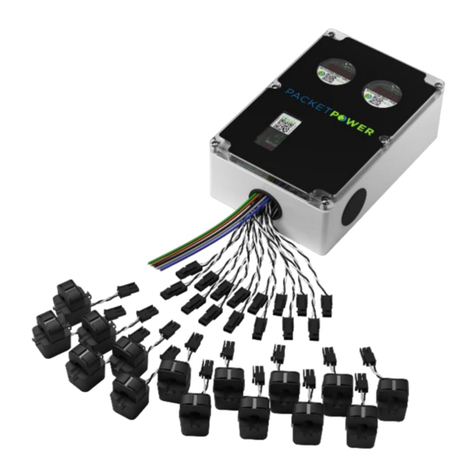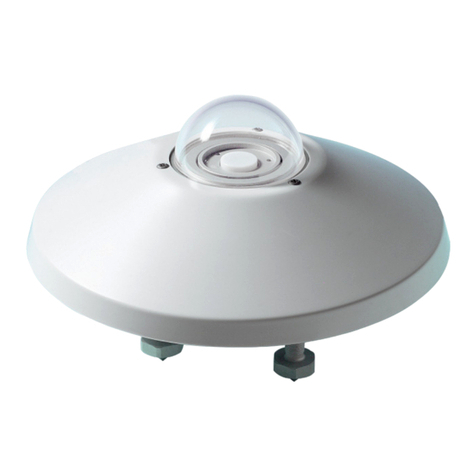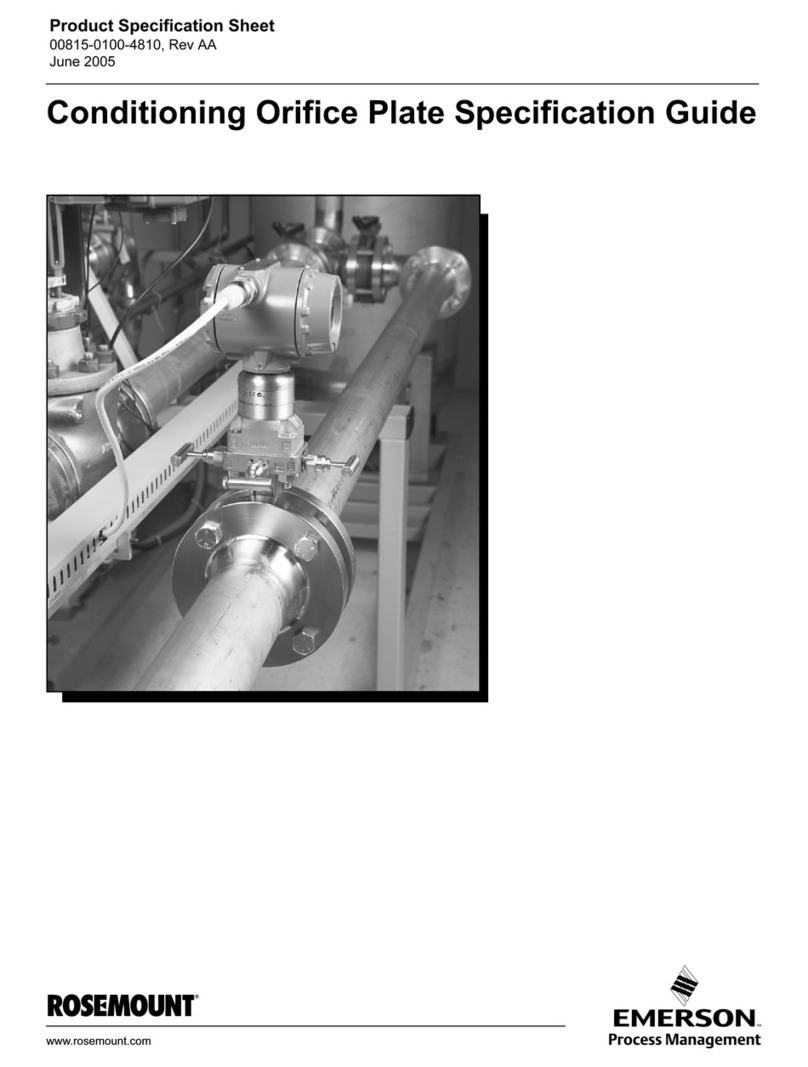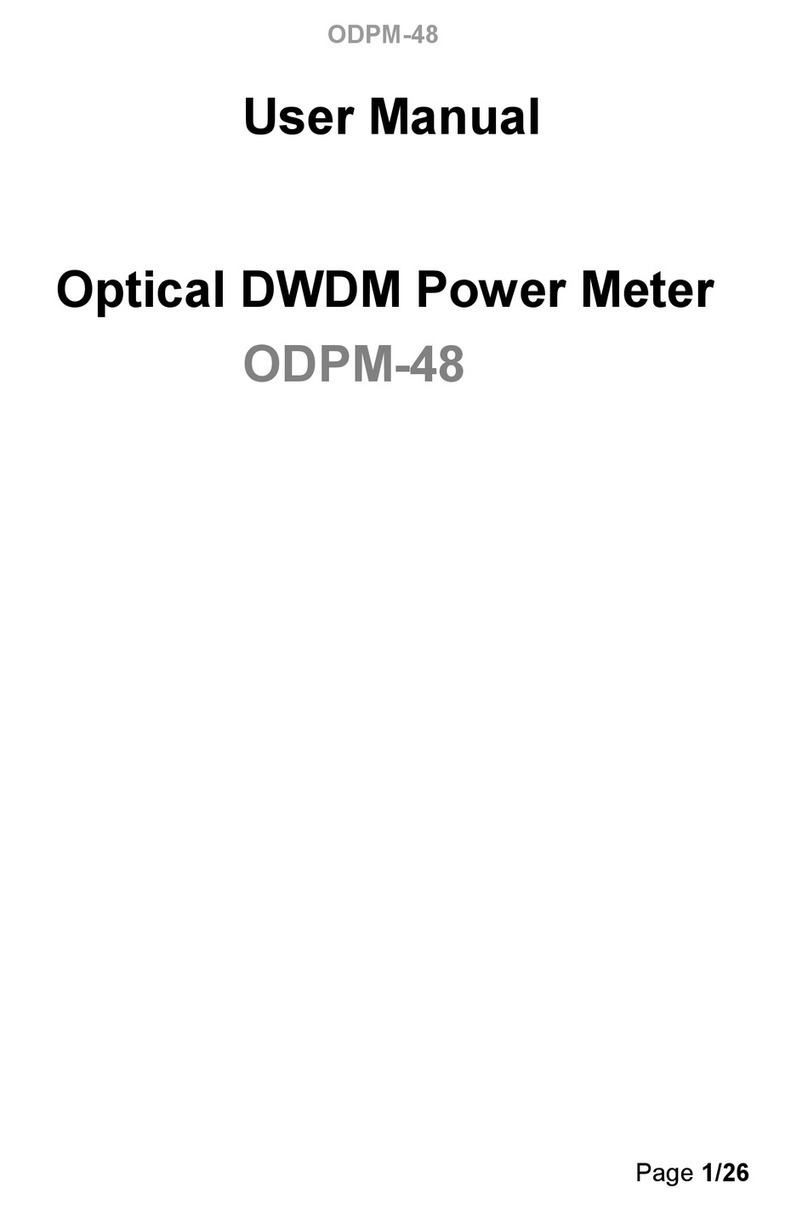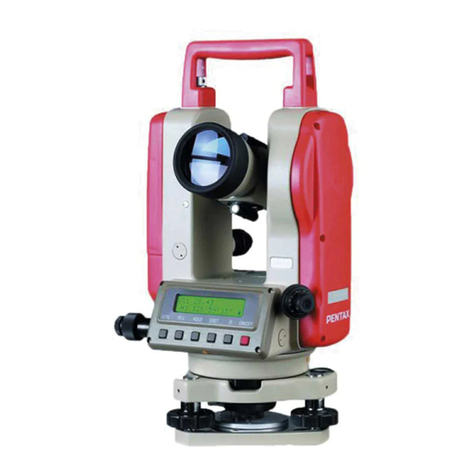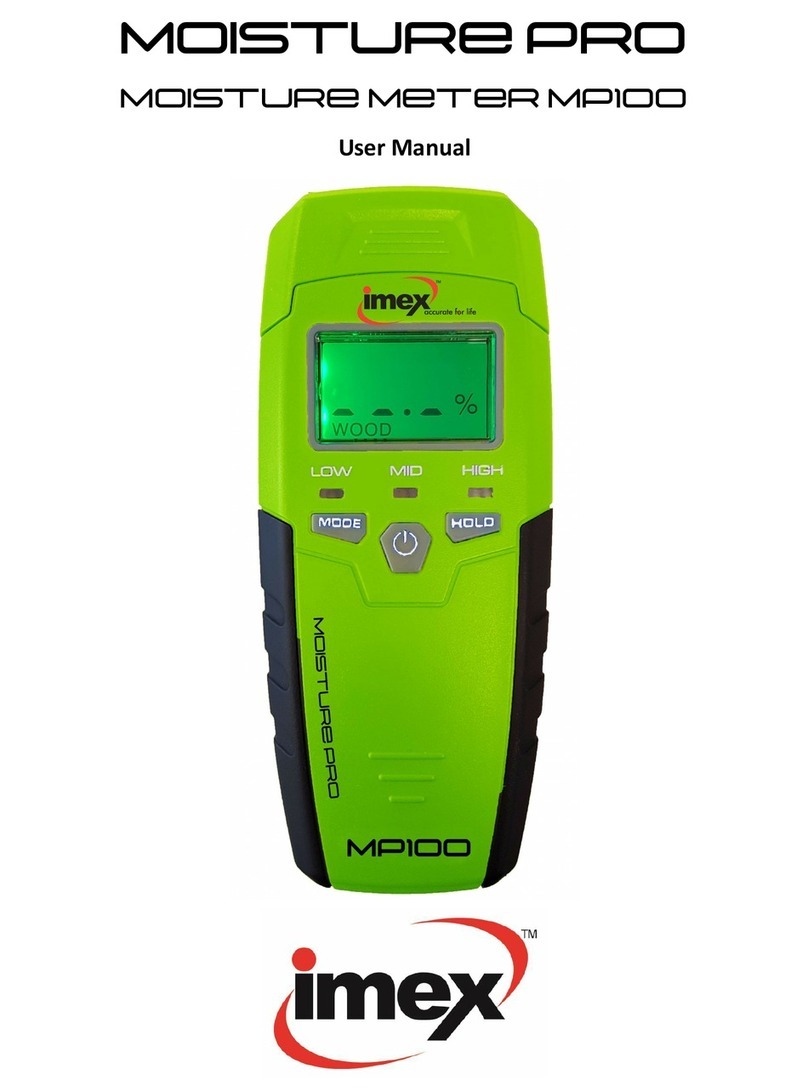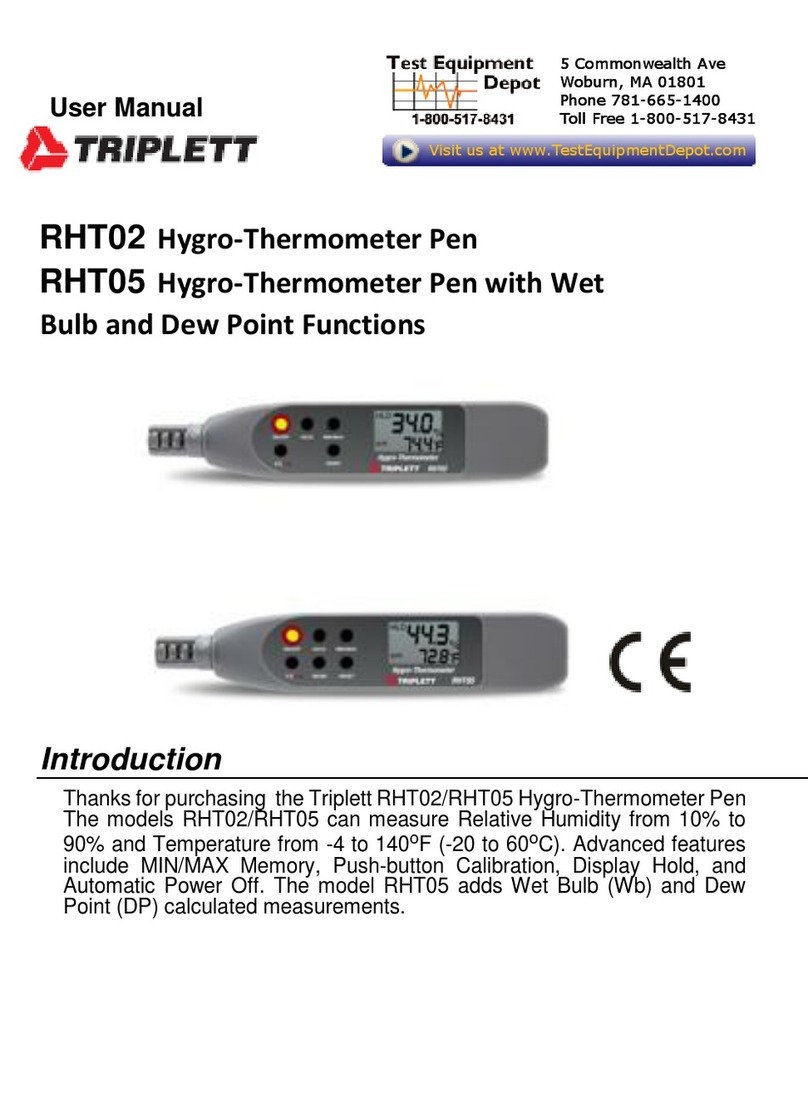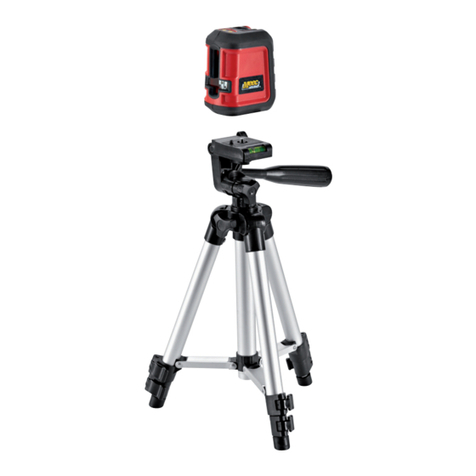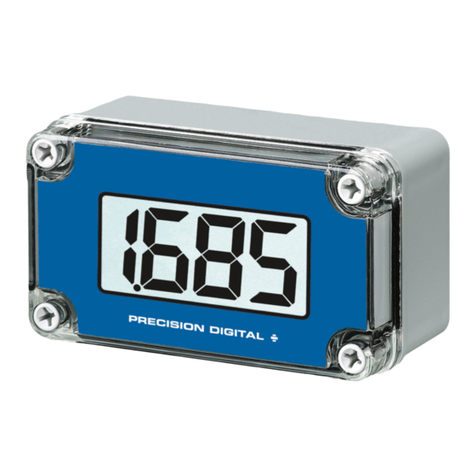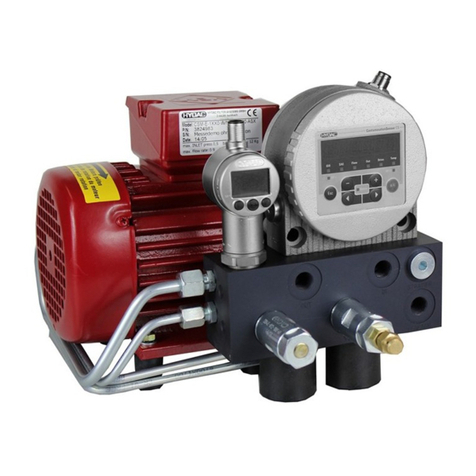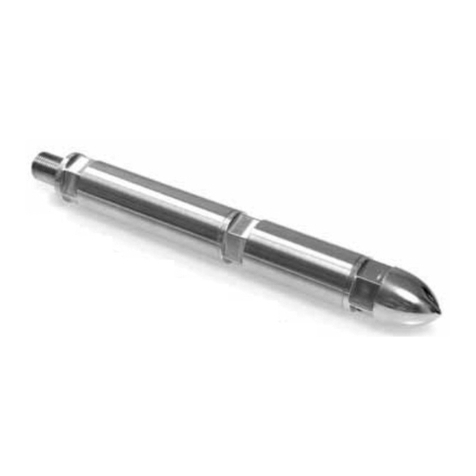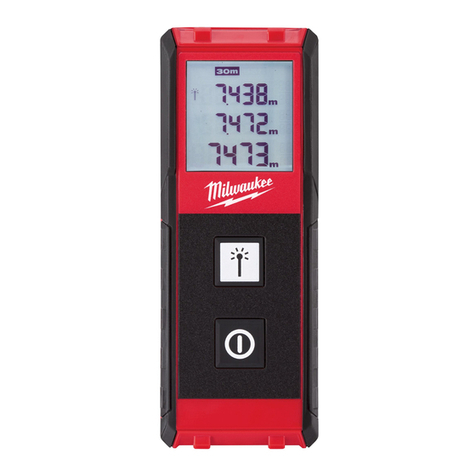DENT Instruments PowerScout 12 HD User manual

DENT INSTRUMENTS | QUICK START GUIDE | RELEASE DATE DEC 31, 2018
1
Quick Start Guide
PowerScout™12 HD
PowerScout™48 HD
Networked Metering Systems
and
ViewPoint™HD
Software
© DENT Instruments, Inc. | 925 SW Emkay Drive, Bend, OR 97702 USA
www.dentinstruments.com | support@dentinstruments.com | 800-388-0770

DENT INSTRUMENTS | QUICK START GUIDE | RELEASE DATE DEC 31, 2018
2
DANGER
HAZARD OF ELECTRIC SHOCK, EXPLOSION, OR ARC FLASH
• Turn off all power supplying equipment before working on or inside the equipment.
• Follow safe electrical work practices. See NFPA 70E in the USA, or applicable local codes.
• This equipment must only be installed and serviced by qualified electrical personnel.
• Read, understand and follow the instructions before installing this product.
• Product may use multiple voltage/power sources. Be sure all sources of power have been
disconnected before servicing.
• Use a properly rated voltage sensing device to confirm power is off.
• DO NOT DEPEND ON THIS PRODUCT FOR VOLTAGE INDICATION
• Only install this product on insulated conductors.
• Failure to follow these instructions will result in death or serious injury.
CAUTION
This product is not intended for life or safety applications.
• Do not install this product in hazardous or classified locations.
• The installer is responsible for conformance to all applicable codes.
• Mount this product inside a suitable fire and electrical enclosure.
A qualified person is one who has skills and knowledge related to the construction and operation of this
electrical equipment, and the installation, and has received safety training to recognize and avoid the
hazards involved. NEC2011 Article 100 No responsibility is assumed by DENT Instruments for any
consequences arising out of the use of this material.
DO NOT EXCEED 346V Line to Neutral or 600 volts Line to Line. This meter is equipped to
monitor loads up to 346V L-N. Exceeding this voltage will cause damage to the meter and
danger to the user. Always use a Potential Transformer (PT) for voltages in excess of 346V
L-N or 600 volts line to line. The PowerScout HD is a 600 Volt Over Voltage Category III
device.
For use in a Pollution Degree 2 or better environment only. A Pollution Degree 2 environment must
control conductive pollution and the possibility of condensation or high humidity. Consider the
enclosure, the correct use of ventilation, thermal properties of the equipment, and the relationship
with the environment.
Installation category: CAT II or CAT III
Provide a disconnect device to disconnect the meter from the supply source. Place this device in close
proximity to the equipment, and within easy reach of the operator, and mark it as the disconnecting
device.
The disconnecting device shall meet the relevant requirements of IEC 60947-1 and IEC 60947-3 and shall
be suitable for the application. In the US and Canada, disconnecting fuse holders can be used. Provide
overcurrent protection and disconnecting device for supply conductors with approved current limiting
devices suitable for protecting the wiring. If the equipment is used in a manner not specified by the
manufacturer, the protection provided by the device may be impaired.
For the complete safety information for this product, see the full user guide.

DENT INSTRUMENTS | QUICK START GUIDE | RELEASE DATE DEC 31, 2018
3
TECHNICAL SPECIFICATIONS
Specification Description
Service Types Single Phase, Split Phase, Three Phase-Four Wire (WYE), Three Phase-Three Wire
(Delta)
Voltage Channels 90-346 Volts AC Line-to-Neutral, 600V Line-to-Line, CAT III.
Two voltage reference inputs (PS48HD only)
Current Channels 12 (PS12HD) or 48 (PS48HD) channels, 0.525 VAC max, 333 mV CTs, 0-4,000 Amps
depending on current transducer
Maximum Current Input 150% of current transducer rating (mV CTs) to maintain accuracy. Measure up to
4000A with RōCoil CTs.
Measurement Type True RMS using high-speed digital signal processing (DSP) with continuous sampling
Line Frequency 50-60 Hz (45 - 70 Hz measurable range) – measurement taken L1-N
Power From L1 Phase to L2 Phase. 90-600VAC RMS CAT III 50/60Hz, 500mA AC Max
Use of 12-volt auxiliary output requires 100 VAC minimum input voltage.
AC Protection 0.5A Fuse 200kA interrupt capacity
Power Out Unregulated 12VDC output, 200 mA, self-resetting fuse
Waveform Sampling 1.8 kHz (PS48HD), 3.6 HZ (PS12HD)
Parameter Update Rate 1 second
Interval Data Recording Internal Storage(standard): Energy (kWh) values are recorded every 15 minutes for 63
days (downloadable log)
DENTCloud Storage (optional): Volts, Amps, kW, kVAR, kVA, dPF, kWh values are
recorded every 15 minutes. Unlimited historical storage.
Each record is time-stamped.
Measurements Volts, Amps, kW, kVAR, kVA, aPF, dPF, kW demand, kVA demand, Import (Received)
kWh, Export (Delivered) kWh, Net kWh, Import (Received) kVAh, Export (Delivered)
kVAh, Net kVAh, Import (Received) kVARh, Export (Delivered) kVARh, Net kVARh,
THD, Theta, Frequency. All parameters for each phase and system total.
Accuracy 0.2% ANSI C12.20-2010 Class 0.2
Resolution Values reported in IEEE-754 single precision floating point format (32 bit)
Indicators Optional 4-line display, tri-color backlight (PhaseChek™)
Alarm Output Over/Under Voltage & Current (SPDT Relay - 30 VDC)
Pulse Inputs PS12HD – 4 inputs
PS48HD – 2 inputs
3.3V sourcing voltage (current limited) to user dry contact pulse output
Maximum Pulse Rate 10 HZ (50 msec minimum transition time)
Communication
Hardware RS-485, Ethernet, & USB (for configuration only)

DENT INSTRUMENTS | QUICK START GUIDE | RELEASE DATE DEC 31, 2018
4
Supported Protocols Modbus RTU or BACnet Master Slave Token Passing protocol (MS/TP)
Modbus (using SunSpec IEEE-754 single precision floating point model)
Max Communication Length 1200 meters with Data Range of 100K bits/second or less
RS-485 Loading 1/8 unit
Communication Rate (baud) 9600 (Default), 19200, 38400, 57600, 76800, 115200
Data Bits 8
Parity None, Even, Odd
Stop Bit 2, 1
Termination None provided
Data Formats Modbus RTU, BACnet MS/TP, Modbus TCP or BACnet IP
Mechanical
Wire Connections 12-22 AWG 600 VAC, Voltage connection must be #14 AWG or larger & 600 VAC rated
Mounting Enclosure or Panel Mount
High Voltage Cover IP30. Available with PS48/PS12 Enclosure and PS48 Plate models
Operating Temperature -20 to + 60⁰C (-4 to 140⁰F) (the colder the temperature the more voltage needed to
power the board)
Humidity 5% to 95% non-condensing
Enclosure ABS Plastic, 94-V0 flammability rating, connections sized for 1” EMT Conduit
PS48 Dimensions (L) 33.7cm x (W) 25.1cm x (H) 8.0 cm (13.3” x 9.8” x 3.1”) (enclosure version)
(L) 26.2cm x (W) 24.1cm x (H) 8.0 cm (10.3” x 9.5” x 3.1”) (mounting plate version)
PS12 Dimensions (L) 24.8cm x (W) 25.1cm x (H) 8.0 cm (9.8” x 9.8” x 3.1”) (enclosure version)
(L) 17.8cm x (W) 26.3cm x (H) 8.0 cm (7.0” x 10.4” x 3.1”) (mounting plate version)
PCBA Dimensions (L) 21.6cm x (W) 21.6cm x (H) 6.4 cm (8.5” x 8.5” x 2.5”)
ViewPoint™ HD Minimum System Requirements
Operating System Windows® 7, Windows® 8, Windows® 10
Communications Port USB or Ethernet connectivity
Safety
FCC Compliance This device has been tested and found to comply with the limits for a Class A digital
device, pursuant to part 15 of the FCC Rules. These limits are designed to provide
reasonable protection against harmful interference when the equipment is operated
in a commercial environment. This equipment generates, uses, and can radiate radio
frequency energy and, if not installed and used in accordance with the instruction
manual, may cause harmful interference to radio communications. Operation of this
equipment in a residential area is likely to cause harmful interference in which case
the user will be required to correct the interference at user’s own expense.
Serial/Ethernet Meters The following are UL Recognized:
PS12HD-B-y-z, PS12HD-P-y-z, PS48HD-B-y-z, PS48HD-P-y-z
The following are UL Listed: PS12HD-C-y-z , PS48HD-C-y-z
Conforms to UL Std 61010-1, 3rd Edition, UL 61010-2-30:2010

DENT INSTRUMENTS | QUICK START GUIDE | RELEASE DATE DEC 31, 2018
5
Certified to CSA Std C22.2 No. 61010-1, 3rd Edition
MECHANICAL SPECIFICATIONS
PS48HD Enclosure Dimensions PS12HD Enclosure Dimensions

DENT INSTRUMENTS | QUICK START GUIDE | RELEASE DATE DEC 31, 2018
6
Enclosure Internal Mounting Hole Locations
PS48HD and PS12HD Enclosure Drill Templates

DENT INSTRUMENTS | QUICK START GUIDE | RELEASE DATE DEC 31, 2018
7
Sheet Metal Plate Mounting Hole Locations
PS48HD and PS12HD Mounting Plate Drill Templates

DENT INSTRUMENTS | QUICK START GUIDE | RELEASE DATE DEC 31, 2018
8
INSTALLATION SEQUENCE
The following section illustrates the PS12HD model. The PS48HD components are slightly different but
follow the same procedure.
STEP 1) Remove top cover screws (4x) and high voltage cover screws (2x) – provided
STEP 2) Locate, mark, and drill wall mounting points (2x–6x—user supplied)
The plastic enclosure itself can be used as a template for marking the drill locations on the wall.
If the meter is not available for use as a drill template, a drawing indicating the spacing between mounting
holes can be found in the appendix. The centerline holes are intended for fastening to wall studs. If hollow
wall fasteners are used, the outer 4 mounting points are recommended.
#8 Fastener

DENT INSTRUMENTS | QUICK START GUIDE | RELEASE DATE DEC 31, 2018
9
STEP 3) Mount conduit fittings, conduits, and blanking plugs
STEP 4) Connect voltage leads
DO NOT ENERGIZE METER WITH VOLTAGE COVER REMOVED

DENT INSTRUMENTS | QUICK START GUIDE | RELEASE DATE DEC 31, 2018
10
STEP 5)Attach high voltage cover
STEP 6)Connect CT and Communications Wiring
CONNECTING VOLTAGE
Connect the voltage leads (L1, L2, L3, and N, as necessary) to the meter through a dedicated disconnect
or circuit breaker. A voltage lead of 14 AWG THHN Minimum 600VAC rating (or equivalent) is required.
IMPORTANT:
Verify the circuit breaker is marked as the disconnect breaker for the meter.
IP30
TOUCH SAFE (with internal cover installed)

DENT INSTRUMENTS | QUICK START GUIDE | RELEASE DATE DEC 31, 2018
11
WIRING EXAMPLES
Wiring the PSHD Meter in a 3-wire, Split ɸService Panel
High voltage MAY BE PRESENT. Risk of electric shock. Life threatening voltages may be
present. Qualified personnel only.
Note: Current and voltage inputs must be installed “in phase” for accurate readings (for
example: CT1 on Line 1, CT2 on Line 2
, etc.). Orientation is critical. Ensure that all the CTs are
properly oriented with the line and load as marked.
Failure to install CTs in the correct
orientation and on the correct phase will lead to inaccurate meter readings.
Illustrating the intended wiring configuration for each of the Service Types
available in the Service drop-down list under “Meter Setup”
EXAMPLE LOADS:
•Single Phase L1-N or L2-N 110 VAC: Lighting, Appliance, Living Zone
•Single Phase L1–L2 220 VAC: Water Heater, Clothes Dryer, Equipment with no neutral wire.
•Split Phase L1–L2 220 VAC: Service Entrance, Equipment with neutral wire.
3-Wire, 1 Phase used
On MAINS
L1-N, L2-N
(RōCoils Shown)
Single Phase
110 VAC Plug Loads
L1-N or L2-N
Single Phase
220 VAC Plug Load
L1-L2
Meter is powered
from L1 to L2 on
the V Input 1
terminal
(Label as Disconnect))
Connect the
Neutral wire to
V INPUT 1 (N) on
the PSHD meter
3-Wire, 1 Phase
Split Load
L1-N, L2-N

DENT INSTRUMENTS | QUICK START GUIDE | RELEASE DATE DEC 31, 2018
12
Wiring the PSHD Meter in a 4-wire, 3 ɸService Panel
Illustrating the intended wiring configuration for each of the Service Types
available in the Service drop-down list under “Meter Setup”
Note: The PSHD Meter Series uses the “Neutral” Terminal as a voltage reference. For systems
without a neutral conductor, DENT Instruments suggests connecting a ground wire to
this
terminal. If the neutral terminal is left open, L
-L measurements will be accurate, but L-N
measurements may not be symmetric. If a ground wire is connected to the Neutral terminal,
<2 mA will flow into the ground wire.
Connect the
Neutral wire
or Ground wire to
V INPUT 1 (N) on
the PSHD meter
Meter Power
Connect all phases
to the V INPUT 1
terminal
(Label as Disconnect)
3-Wire, 3 ɸ
DELTA load
(No possibility of
Neutral Current)
L1-N, L2-N(est), L3-N
3 Wire, 3 ɸused
On MAINS
L1-N, L2-N, L3-N
(RōCoils Shown)
Single Phase
Branch Loads
L1-N
4 Wire, 3 ɸ
WYE load
(Neutral Current)
L1-N, L2-N, L3-N

DENT INSTRUMENTS | QUICK START GUIDE | RELEASE DATE DEC 31, 2018
13
WIRING CURRENT SENSORS TO THE PSHD METER
The image below is the counterpart to the service panel illustration and indicates how to connect CTs to
the PSHD meter for each service type. For service types that are not specifically listed, it is
recommended to choose “single phase” service and configure each channel individually. Three phase
loads are illustrated on the left and split phase loads on the right as an example only. Elements are fully
interchangeable on the meter.

DENT INSTRUMENTS | QUICK START GUIDE | RELEASE DATE DEC 31, 2018
14
COMMUNICATION VERIFICATION
Verification includes confirmation of BOTH the physical interface settings (Serial or Ethernet)
and the protocol (Modbus or BACnet) settings.
The LCD User Interface can be used to quickly confirm the settings required for each combination of
interface and protocol. The interface is intuitive and groups together commonly associated registers. The
complete interface is presented in Appendix A as a navigational map. Arrows indicate how to move from
one menu display to the next. A Reverse Contrast entry in the documentation indicates the active menu
item in a list which corresponds to a blinking character in the physical LCD. The ENTER button is used to
select a property and up / down buttons are used to select among the values supported by the meter.
Note that changes to the meter configuration are limited to the communication interface using the LCD.
If additional changes (such as CT type) are required, they must be made using a software interface.
Example LCD Navigation
VIEWPOINT HD /PSHD WEB APP
If your PSHD model does not include the LCD User Interface, or if you prefer to verify the installation using
software, then verification is facilitated through the ViewPoint HD PC application or the PSHD Web App,
which share a common design. Refer to the section on Configuration Details for an overview and list of
instructional videos for ViewPoint HD or the PSHD Web App.

DENT INSTRUMENTS | QUICK START GUIDE | RELEASE DATE DEC 31, 2018
15
OTHER FEATURES
Pulse Inputs
PS12HD meters are equipped with 4 pulse inputs and PS48HD meters are equipped with 2 pulse inputs.
Pulse counting supports accumulation of consumption data from any external meter using a dry contact
(Form A Relay) or open collector outputs. The PSHD pulse inputs are compatible with “low speed” meters.
The pulse duration must exceed 50 mS in both the logic low and high state allowing for a maximum input
frequency of 10 Hz.
Pulse scaling, resetting and accumulated values are accessed through registers and are “system” in
scope. Refer to the register list, ViewPoint HD, or videos for more information.
Alarm (SPDT)
The PSHD meter supports user-configurable alarms for over-current, under-current, over-voltage, and
under-voltage. ViewPoint HD helps users set these values by allowing for values to be entered using
direct entry mode or specifying the limits as a percentage of nominal.
Alarm persistence settings are used to allow for temporary conditions, such as a motor starting, that are
beyond trigger limits. For example, in the case of meter upset from ESD events, short persistence settings
may lead to false alarm triggers. When any alarm condition has been satisfied throughout the persistence
interval, the PSHD trips the MASTER ALARM relay, which is an electromechanical relay on the PCB.
Once tripped, the relay can only be reset by clearing the alarm through Modbus register/ BACnet object
2451.
The Master Alarm relay can be hard wired to an interrupt or polling circuit in a host system allowing for a
more rapid response than the data polling frequency, if desired. The status of each alarm is determined
by reading status registers.
Refer to the register list, ViewPoint HD, or instructional videos for more information.
Note: The Master Alarm relay is intended for low voltage DC connections.
The user must protect the switch from over
-current conditions when closed.
12 Volt Auxiliary Power
The PSHD meter provides an auxiliary 12-volt output that is derived from an auxiliary winding on the
PSHD’s line-connected power supply. The 12-volt supply voltage is unregulated but protected by a self-
resetting fuse. The purpose of the supply is to power external radio equipment or provide supply voltage
for analog sensors, such as 4-20 mA current loop devices. If full-rated current is drawn from this terminal,
the minimum operating voltage of the L1-L2 power supply is 100 VAC.
>50 mec
>50 mec
This manual suits for next models
1
Table of contents
Other DENT Instruments Measuring Instrument manuals
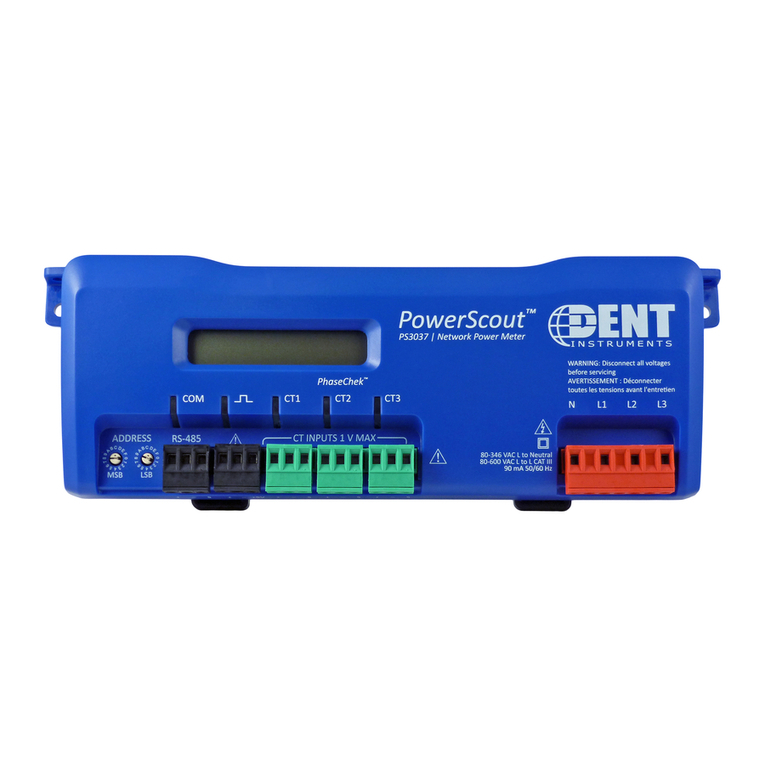
DENT Instruments
DENT Instruments powerscout 3037 Manual
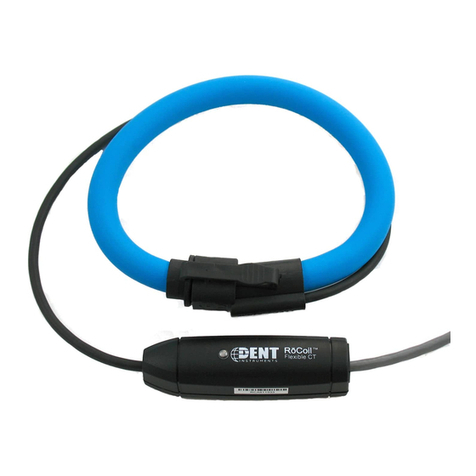
DENT Instruments
DENT Instruments ROCOIL MV User manual
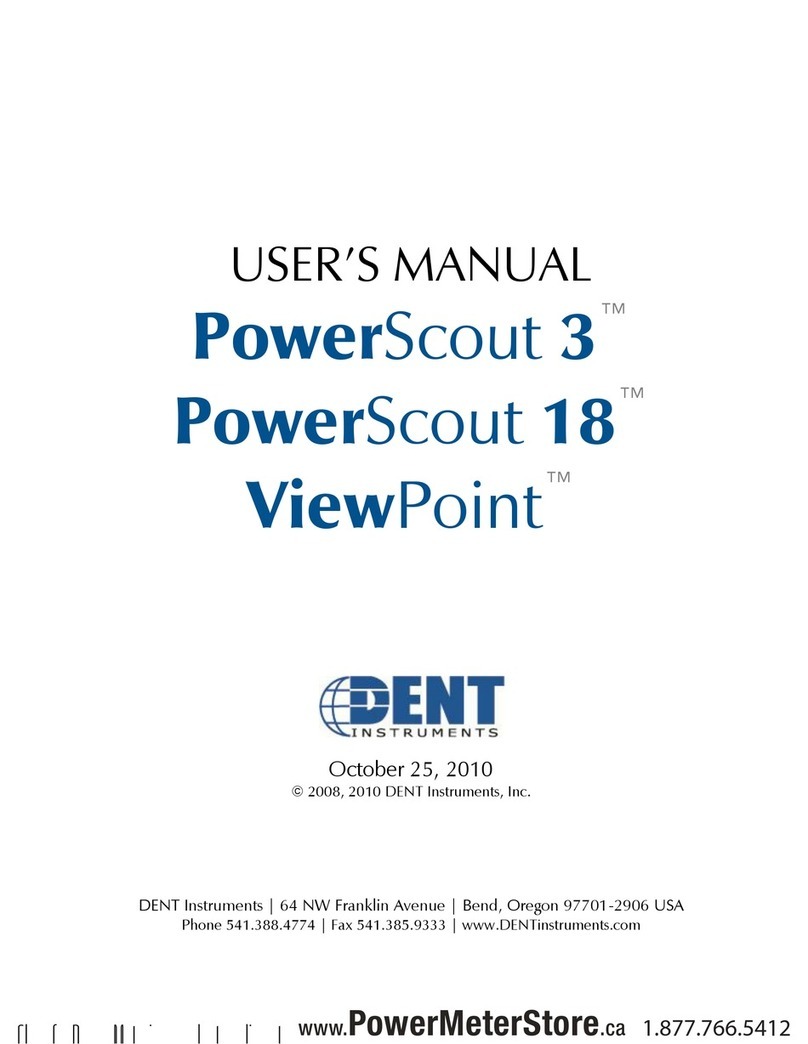
DENT Instruments
DENT Instruments PowerScout 3 User manual
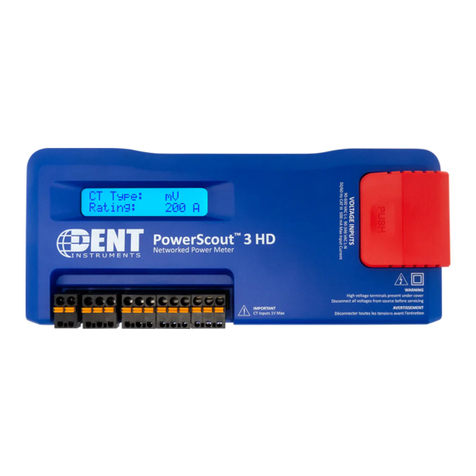
DENT Instruments
DENT Instruments PowerScout 3 HD User manual
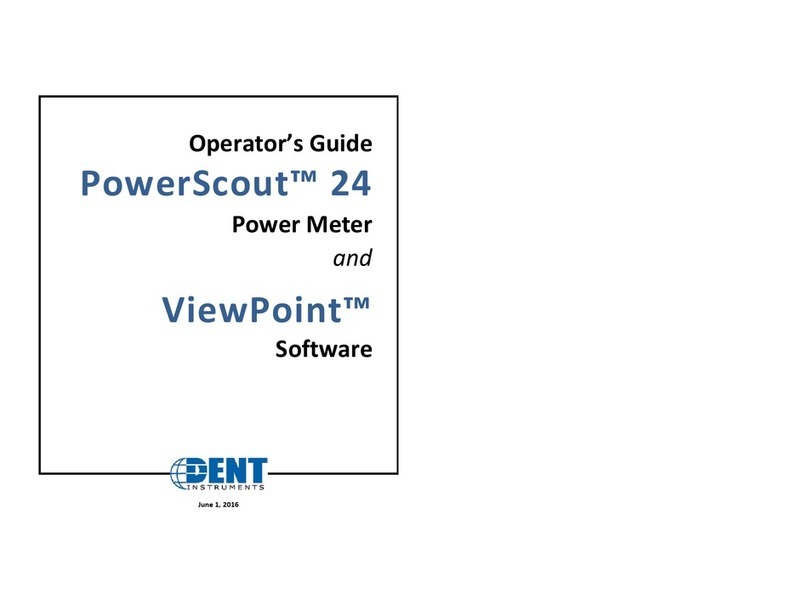
DENT Instruments
DENT Instruments PowerScout 24 Manual

DENT Instruments
DENT Instruments PowerScout 24 Manual

DENT Instruments
DENT Instruments PowerScout 3 Manual
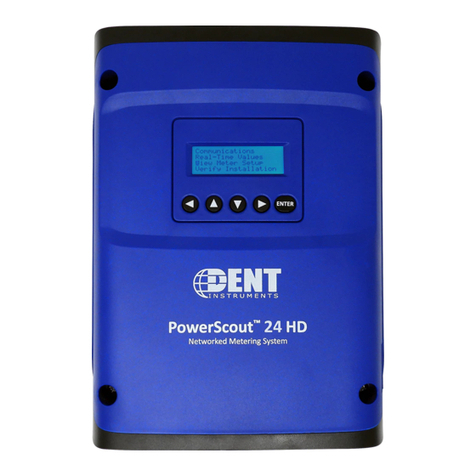
DENT Instruments
DENT Instruments PowerScout HD Series Manual
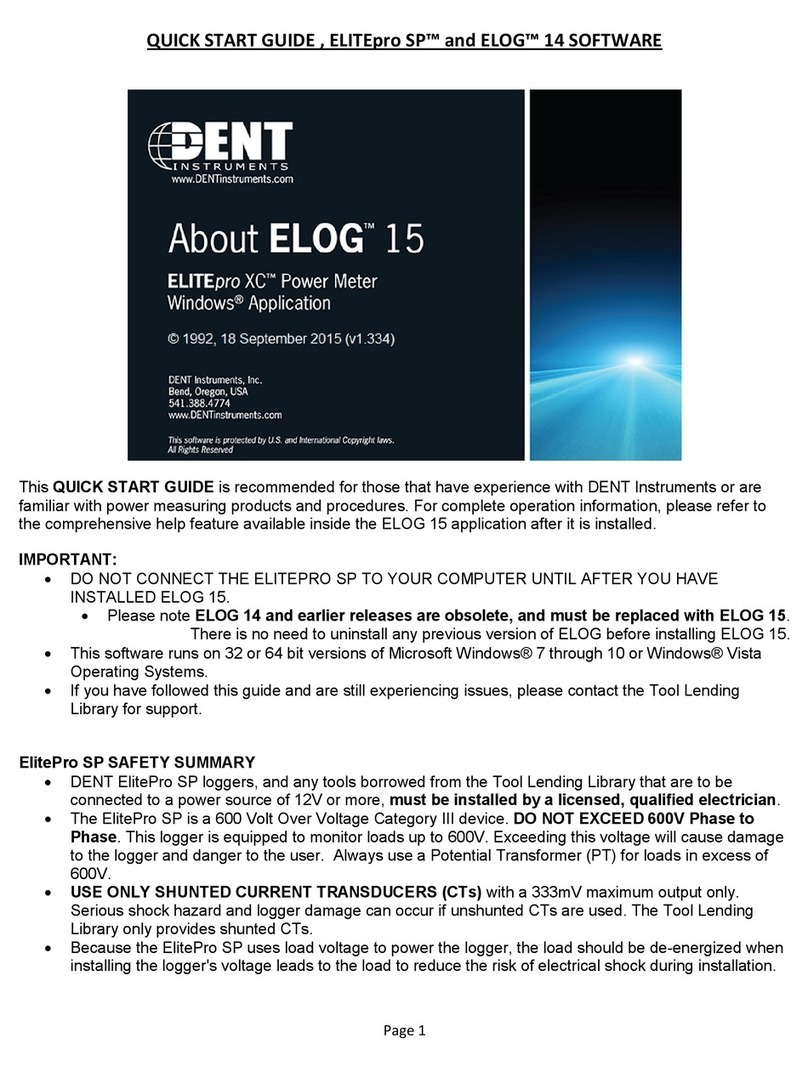
DENT Instruments
DENT Instruments ELITEpro ELOG 15 User manual
